If you think winter gardening involves months of eating kale, think again. There are plenty of vegetables that can survive a freeze in USDA zones 6 or below, and even improve after multiple freezes.
These crops are just as (if not more) cold-hardy as most kale varieties and don’t need a lot of babying in winter. That means no greenhouses, no cold frames—they’ll get through with just a simple low tunnel and a layer of frost cover, if that’s all you have. Some of them can even go unprotected all winter!
Now, keep in mind that cold tolerance will depend on your particular climate, including soil conditions, rain, and snow.
The killing temperatures listed below are merely guidelines. They don’t take into account cold, drying winds or cold, wet weather, both of which can destroy plants quicker than cold temperatures alone.
In these environments, your crops will do better with some type of protection against the elements.
On the other hand, if you live someplace that gets heavy snow cover all winter, your plants will be better insulated from the cold (though growing them under cover will make harvesting easier).
So if you never thought about growing food in winter, hopefully this list will inspire you to try!
When to plant a winter garden
What some people might find surprising is that a winter garden should be planted well before winter—in fact, all of the winter crops below should be seeded or transplanted by mid- to late summer so their roots can get established.
The last few weeks of summer’s warmth and longer days help seedlings develop quickly into harvestable size. As temperatures drop and the days shorten, overwintering crops go dormant.
This is why it’s important to start your plants early, otherwise they’ll enter winter not yet fully grown (and not quite ready for picking).
If you’re reading this in fall and realize you missed the window, try one of these fast-growing vegetables that you can plant now and harvest in 40 days!
The best cold-hardy vegetables to grow in a winter garden
1. Spinach
Despite its tender leaves, spinach is a tough little plant. It overwinters easily in my zone (6b in the Central Oregon high desert) without protection, and bounces back in early spring with renewed vigor.
Colder climates may see their crop die back after a hard freeze, but sprout new leaves in spring.
If your goal is to harvest salads all winter long, however, you’ll want to grow spinach under a medium to heavyweight frost cover so it keeps producing.
Savoy (deeply crinkled) types tend to be more cold-hardy than flat-leaf varieties, so try Tyee or Winter Bloomsdale for your winter garden.

2. Mache and miner’s lettuce
Previously dismissed as weeds, mache (also known as corn salad or lamb’s lettuce) and miner’s lettuce (also known as winter purslane) are popular with foragers and with four-season farmers looking for a low-maintenance winter crop.
They’re so well adapted to cold, in fact, that their seeds won’t germinate in late summer’s heat. If you want mache or miner’s lettuce in your garden, you’ll have to wait to sow until soil temperatures are 68°F or below.
Once established, the plants can survive down to at least 0°F, giving you plentiful salad greens all season long.
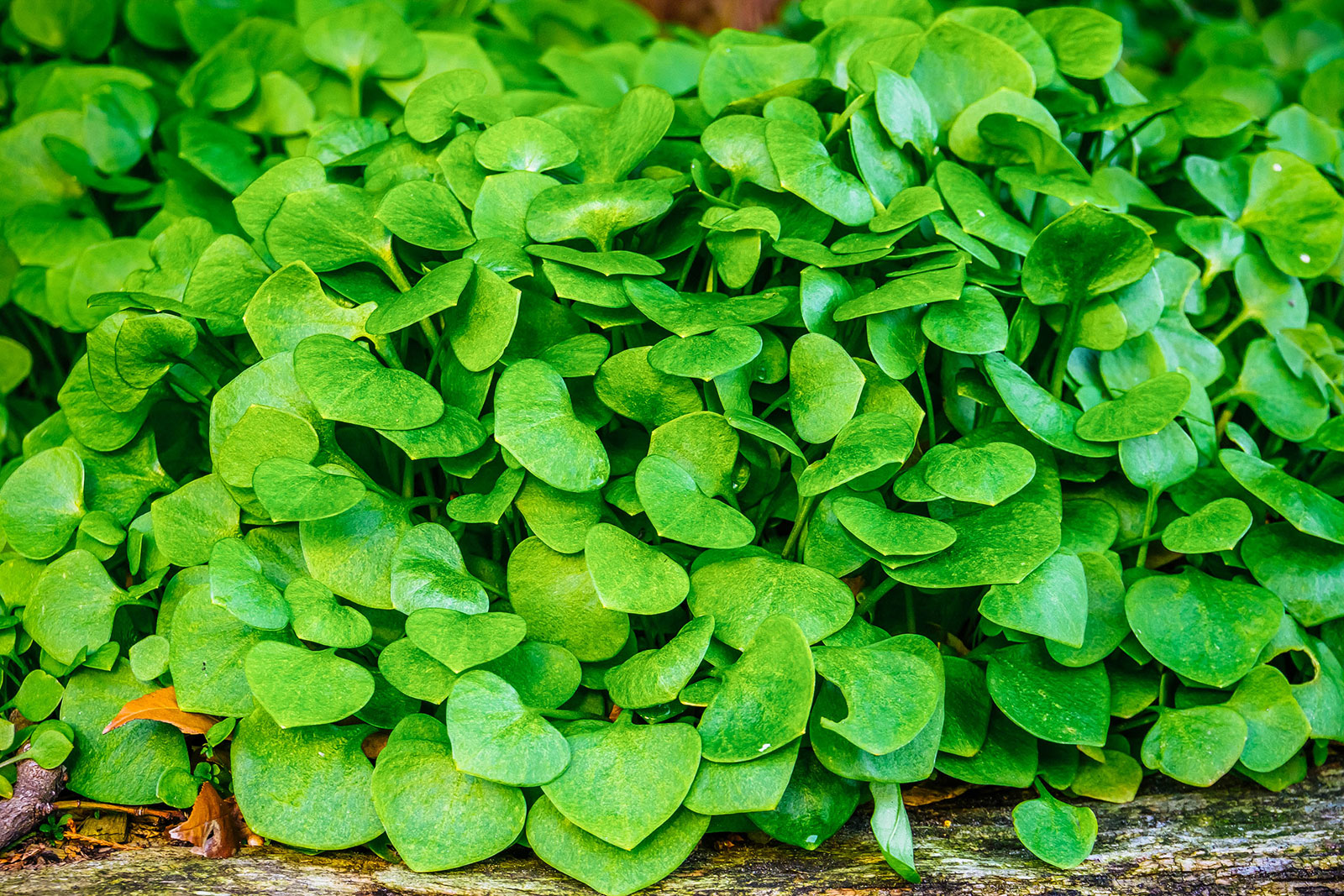
3. Collards
Collard greens are not just a Southern thing. I’ve been cooking with these nutrient-dense greens for decades in soups and sautes; they also make excellent green wraps if you’re tired of tortillas.
The high-yielding plants are loaded with incredible flavor that only gets better the colder it turns. And that’s a plus for winter gardens, as collards easily outperform kale in terms of freeze resistance. In fact, it’s the most freeze-resistant of all the brassicas.
Where kale varieties like Red Russian start to wilt under extreme cold, collards hold steady down to 0°F without so much as a shiver. Blue Max is a favorite that’s always reliable through the depths of winter.
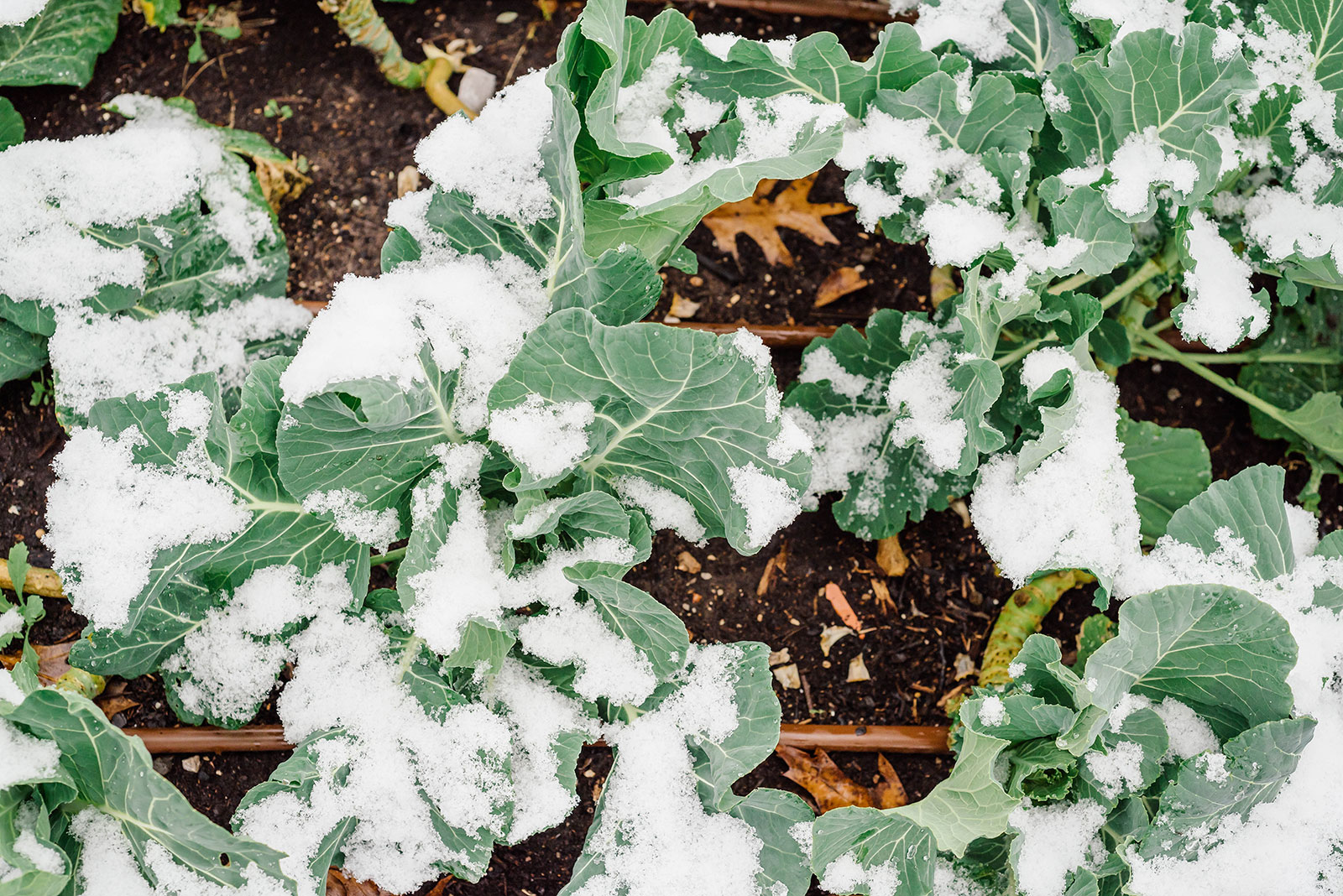
4. Cabbage
Overwintering cabbage varieties really shine in the fall garden, as they’re less bothered by pests and their flavor improves with frost.
The key to getting cabbage to survive through winter is to start the seeds indoors in early to mid-summer (depending on your climate), then transplant in the garden in late summer. This way, the plants will be well established before freezing weather arrives.
Winter varieties like January King are hardy down to 10°F without protection, but can go even colder if grown under a low tunnel.
Like most other leafy greens, savoy types have better freeze resistance than smooth-leaved varieties.

5. Chard
Swiss chard is often grown in summer gardens because it has great drought tolerance, but it’s that same trait that makes it remarkably tolerant to cold as well.
Chard is hardy down to 15°F before needing cover. Or, you can harvest all the leaves at once and add a thick layer of mulch over the crown. The remaining crown will overwinter and regrow new leaves in spring, giving you a head start in the garden.
In my experience, white-stemmed varieties (like Fordhook Giant) are cold-hardier than multicolored varieties (like Bright Lights).

6. Salad burnet
Salad burnet isn’t found in most gardens, and when it is, it’s usually a spring herb grown for its fresh, slightly nutty, cucumber-y flavor.
But this low-mounding, fern-like green is one of my favorite salad crops in winter because the plants can survive dips down to 0°F, despite their delicate appearance. It’s also a perennial that thrives in zones 4 through 10.
Plant salad burnet in fall, where it’ll establish itself quickly in the cooler weather, and harvest it year after year.

7. Sorrel
Another mainstay in my perennial vegetable garden is sorrel. This leafy green is even more freeze-resistant than salad burnet (it can tolerate temps as low as -20°F) but is adaptable to most climates, as long as it isn’t too hot.
The plant is rich in oxalic acid, which gives it a light, tangy taste. You can use a handful of sorrel leaves to perk up a green salad, or wilt it in soups to add a lemony zip.
I grow red-veined sorrel (also known as bloody dock), garden sorrel, and True French sorrel in my garden, and harvest from those plants year-round.
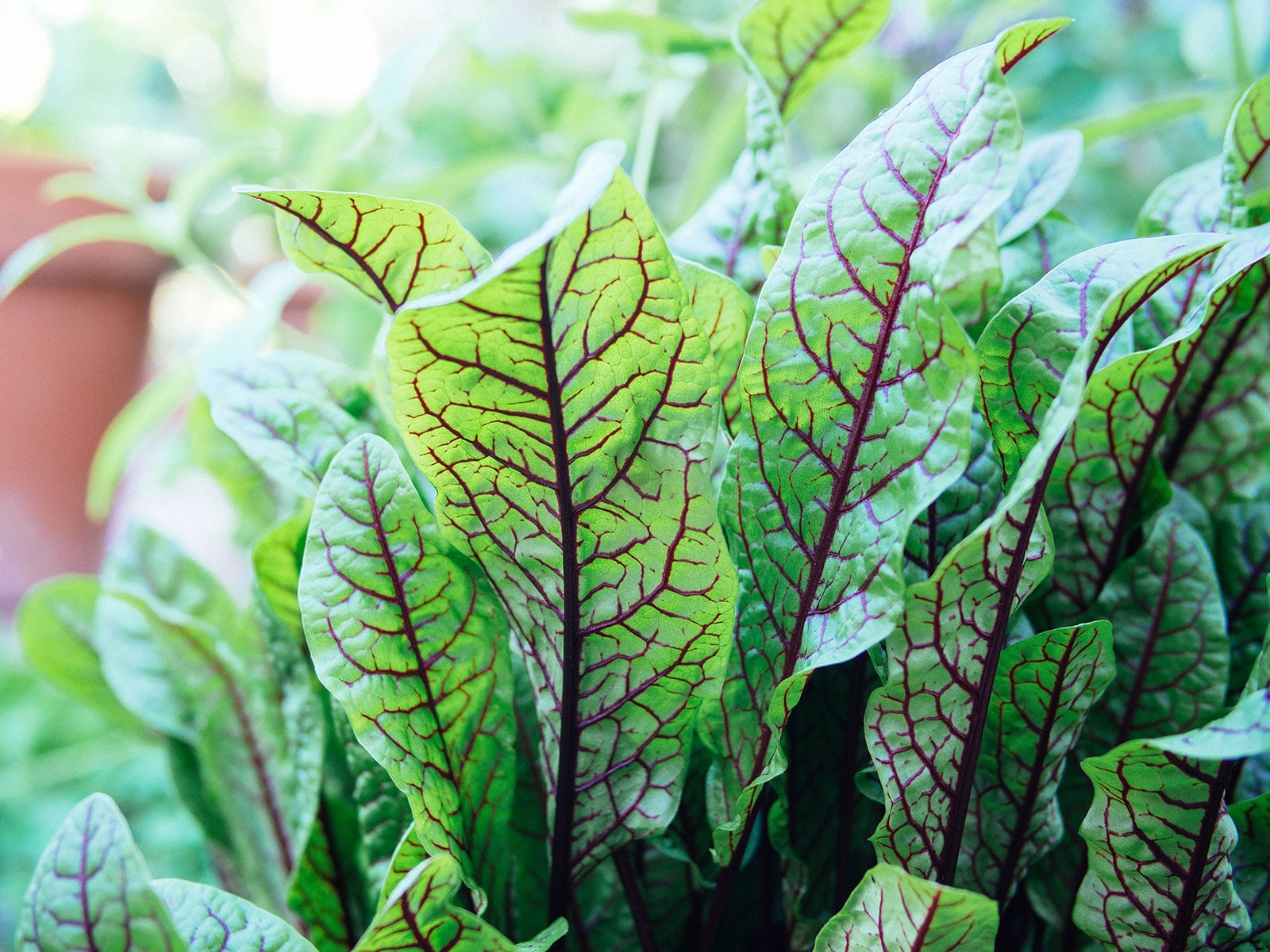
8. Leeks
If you plant garlic in fall, you know that garlic leaves are very resilient to freezing weather. Leeks are a close cousin in the allium family and can also withstand some pretty frigid temps.
Unlike garlic and other alliums, leeks aren’t sensitive to day length, so they continue to grow well through the shorter days of winter.
The darker blue-green varieties tend to be hardier than lighter-colored cultivars, often surviving down to 0°F. My favorites for a winter garden are Durabel and Liège Giant.
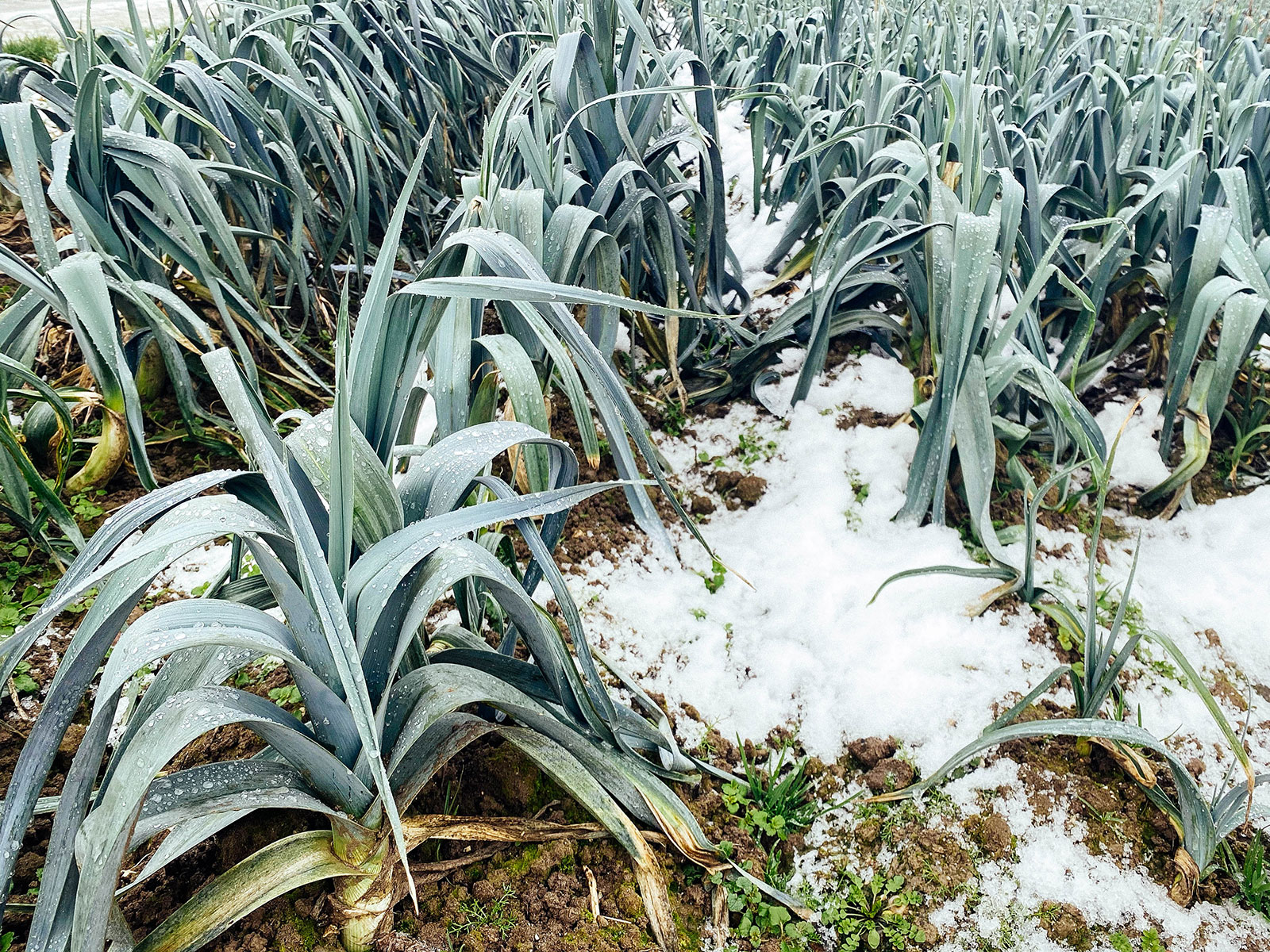
9. Carrots
Like all root vegetables, carrots crave chilly weather and accumulate more sugars in response to cold.
Not only do these sugars act as a natural “antifreeze” to protect the plant from freeze damage, they turn what’s normally a bland or bitter vegetable in summer into a delectably sweet treat in winter.
I like to grow carrots under a low tunnel to make harvesting easier. That way, I don’t have to dig them out from under a blanket of snow.
The carrot tops are cold-hardy down to at least 18°F but the roots can take even colder temps, especially if you pile on a thick layer of straw mulch to insulate them.
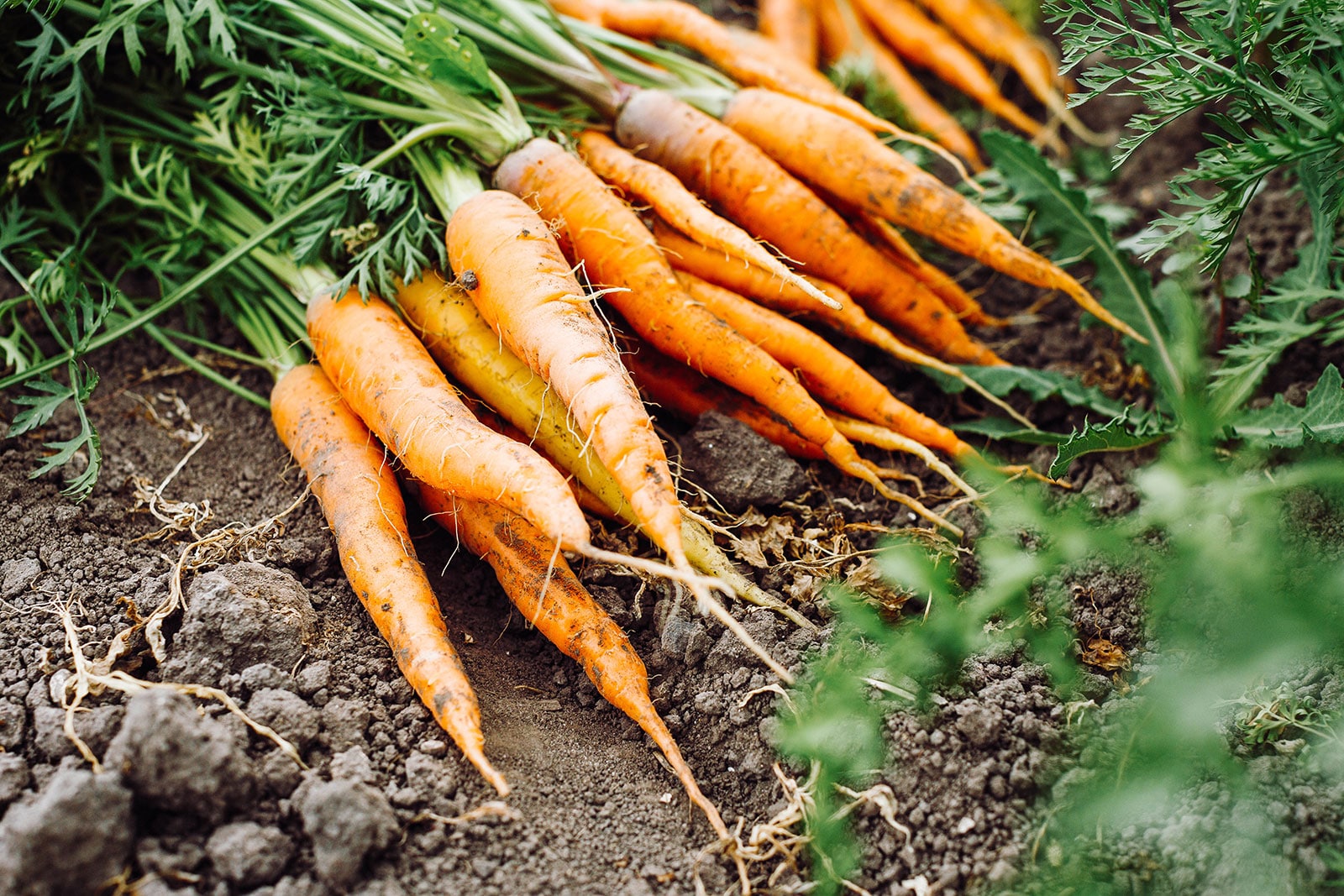
10. Turnips
Turnips aren’t as cold-tolerant as other crops on this list, but it’s worth mentioning because many people are surprised at how different it tastes when grown in winter.
Like carrots and other root vegetables, turnips accumulate more sugars the colder it gets, so it loses much of its peppery-ness and bitterness when harvested after a few hard freezes—even when grown to full size.
It won’t survive below 10°F, but can make it through a few extra-frosty nights if you grow thicker-skinned turnip varieties that produce roots entirely underground (rather than turnips that protrude a bit above ground). A heavy layer of mulch and frost cover helps as well.
Golden Globe is what I recommend for a winter garden.
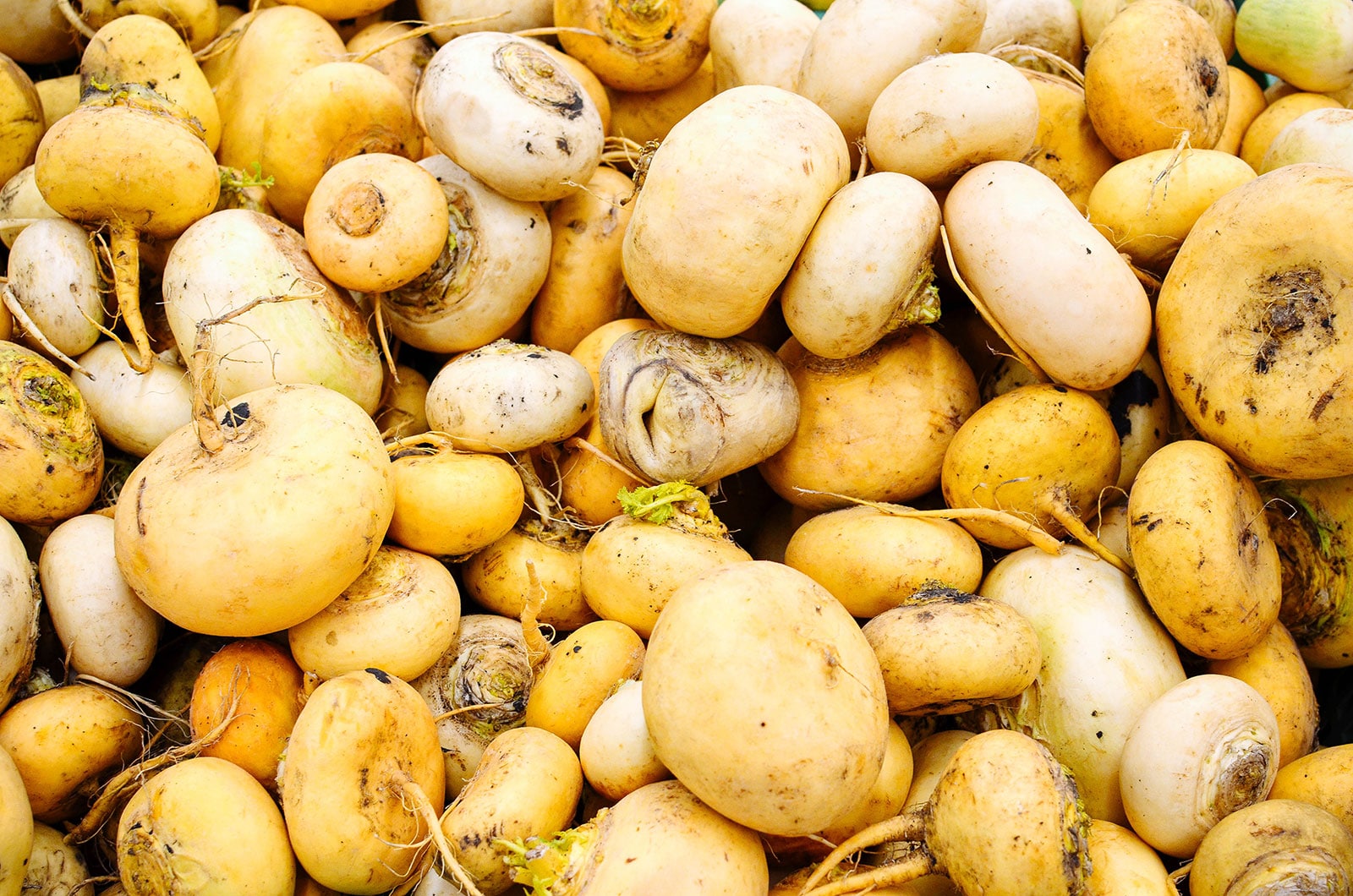
11. Rutabagas
Have you ever tried rutabagas? Closely related to turnips, they were originally found growing wild in 17th century Sweden, though they’re believed to have come from Russia as a cross between turnips and cabbage. (Sometimes you’ll see them referred to as Swedes or Swede turnips.)
They have a sweet yet savory flavor when cooked, and are often used as a substitute for potatoes. (I like to think of them as potatoes with an edge.) You can use them in soups and stews, or roast them with other root vegetables.
Rutabagas are more freeze-tolerant than turnips, but require about four more weeks to mature. If you want to harvest rutabagas in winter, plant in mid to late summer and let them mature in cold weather, which improves their flavor and texture.
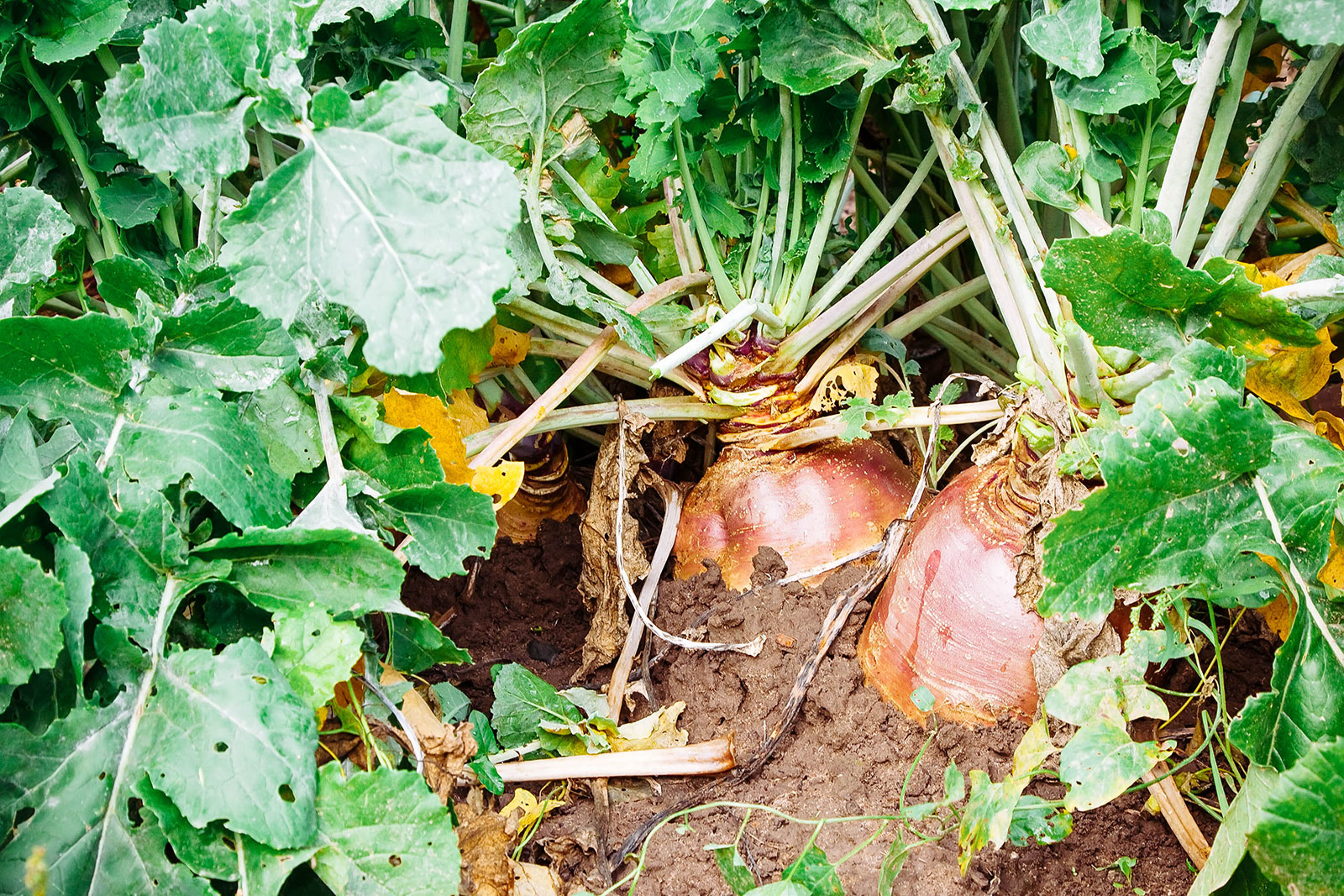
12. Parsnips
In the United States, it feels like parsnips are one of those forgotten root crops that take a distant backseat to carrots. But, this humble vegetable is worth rediscovering because it’s amazing in soups and roasts.
Like other root vegetables, it gets sweeter when it’s kissed by frost a few times. And if you don’t get around to eating it right away, it stores super well in the ground all winter (right where it’s growing) until you’re ready to harvest.
From seed, parsnips can take 100 to 130 days to reach maturity, so be sure to plan ahead—and be patient!
Related: Days to Maturity: What It Really Means For Your Plants
It can be slow to germinate, and you’ll improve your chances of germination if you start with brand-new seed (as even one-year-old seeds lose viability quickly) and sprout them in a coffee filter or paper towel first.
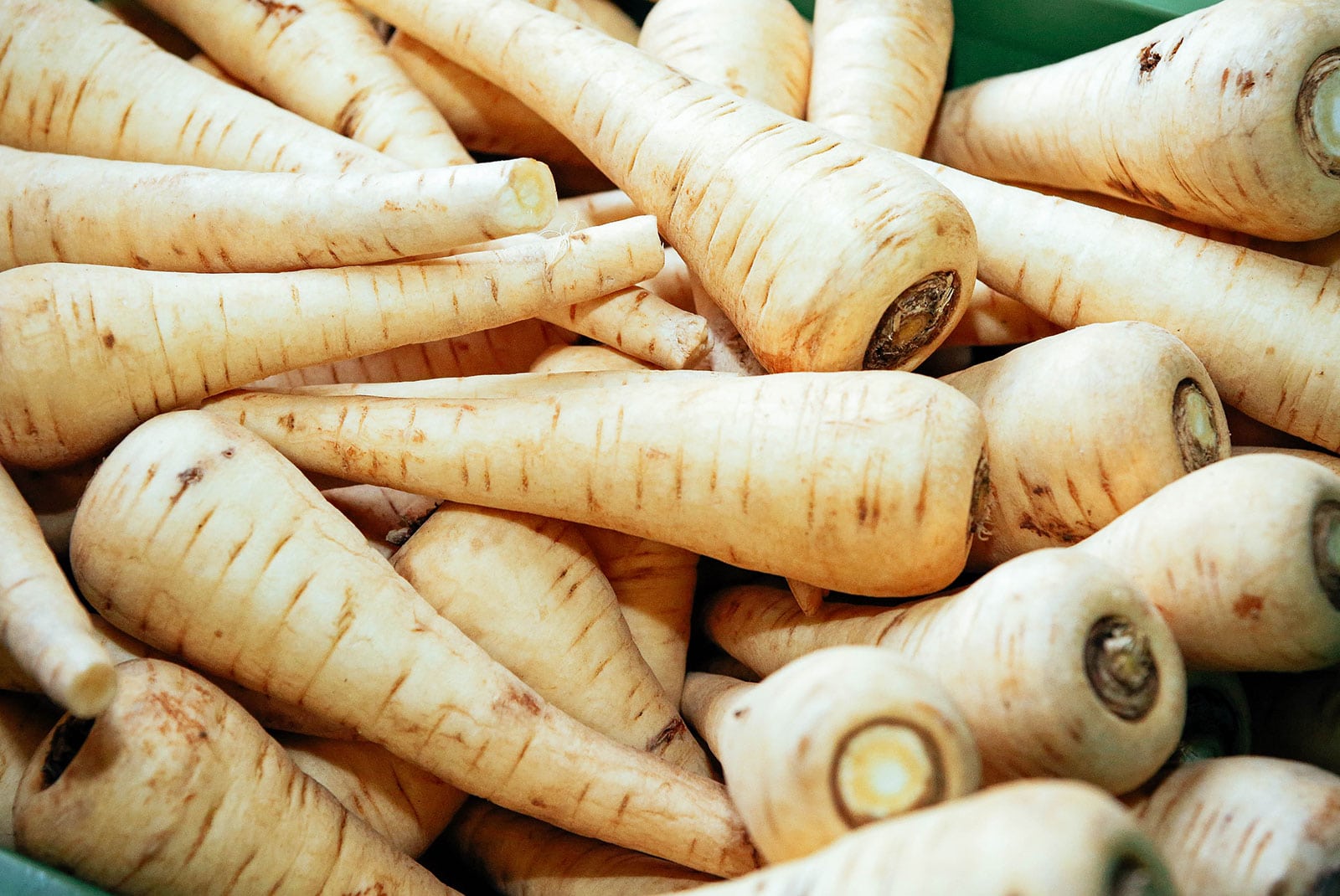
13. Austrian winter peas
If you love the taste of sweet spring peas, you’ll love them even more in winter.
Austrian winter peas (a winter-hardy variety that’s also grown as a nitrogen-fixing cover crop) produces pea shoots abundantly down to at least 10°F (or 0°F with a midweight frost cover).
You can plant them in late summer to fall, then harvest the tender young leaves for as long as eight months in many regions (from October to May) before the plants go to seed in spring.
But to make them go the extra mile in your garden, cut down the plants before they flower (right at soil level, leaving the roots underground) and spread the foliage across your bed as mulch. They’ll decompose both below and above ground and provide viable nutrients for the next crop.
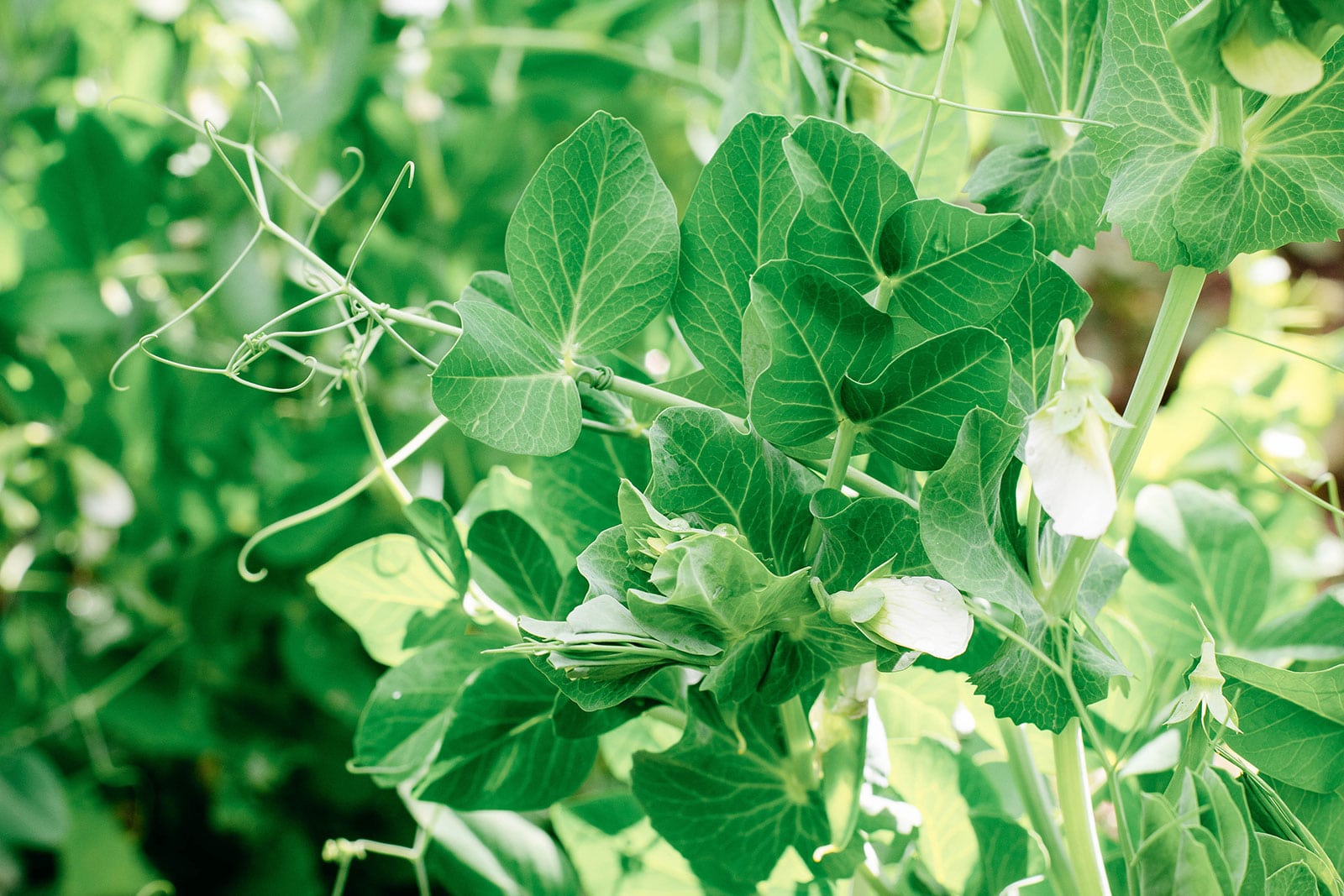
So you still want to grow kale this winter? Just be aware that cold tolerance varies widely. In my experience, the hardiest kale varieties have thick, finely curled leaves, like Vates (which can be left unprotected down to 0°F) and Winterbor (which can survive down to 5°F).
Most other varieties (like Red Russian and Lacinato) struggle in zones 7 and below, so they’ll need to be grown under cover.
More to learn:
- Why Do Some Vegetables Turn Sweeter in Winter?
- 10 Fast-Growing Vegetables You Can Harvest in 40 Days or Less
This post updated from an article that originally appeared on September 9, 2021.
View the Web Story on cold-hardy vegetables.


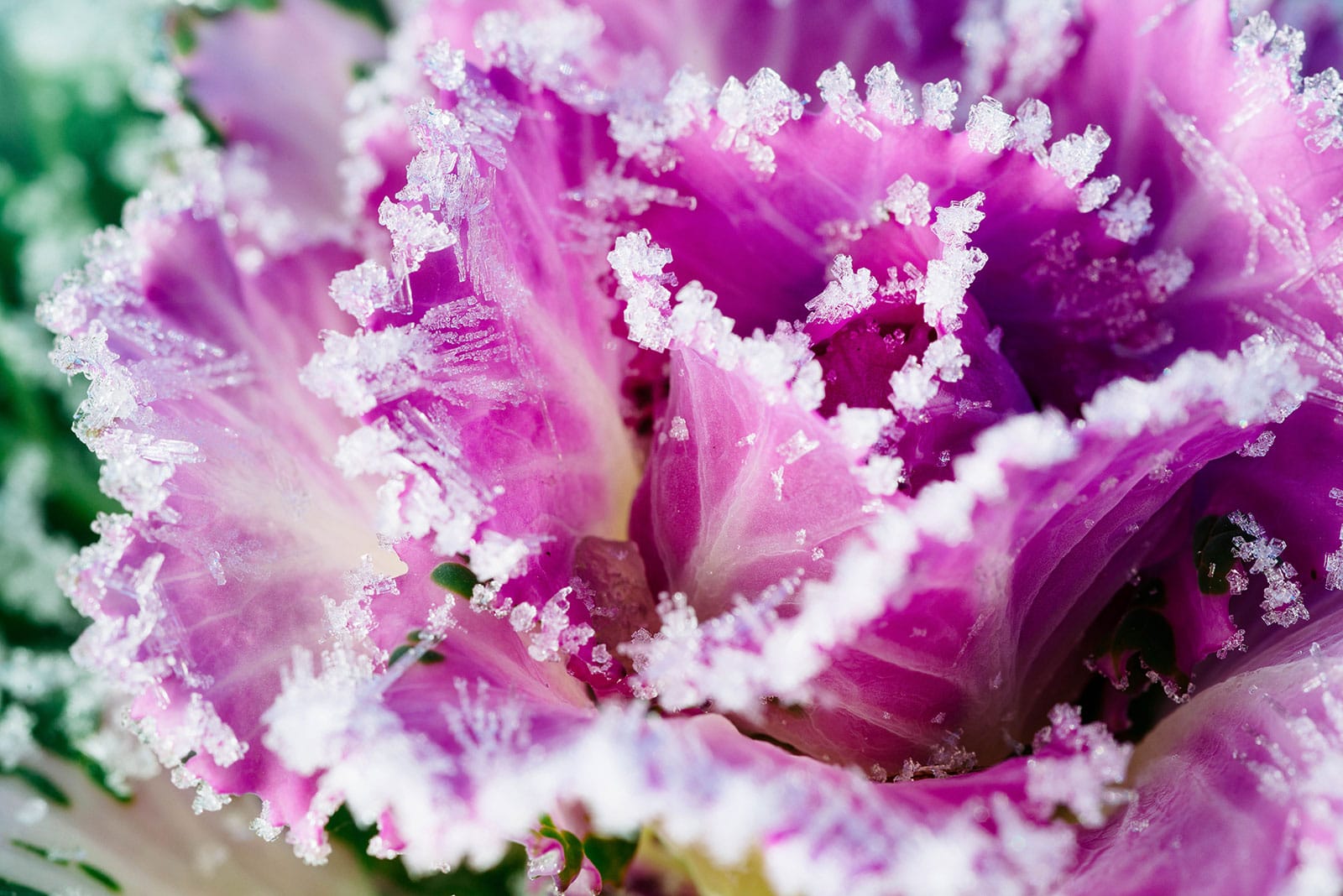













Wonderful advice, as usual!
THANK YOU!
;0 )
How are these more winter hardy than Kale? Your title is misleading, confusing, and unnecessary .
Hi Linda,
I’ve been following you since your San Diego days, as I lived there 3 decades. I am headed to Southern Oregon myself, Zone 8b, to learn a new style of gardening: plenty of water and good soil, things not found in coastal SD. Thanks for keeping us up on your adventures, and the bountiful advice. Now to re-learn my gardening techniques, including snow!
Where do you find the seeds for Austrian Winter peas? I can’t seem to locate anywhere. They sound like something I’d like to try.
Thanks, Linda. Great timing as I’m starting to dream about next year’s garden. This fall grew an early cabbage and Napa in order to harvest early winter for kimchi’s and krauts but protected under cover from moths and the creeps got in. Removed cover so could watch grow and pests naturally reduced as cold came. You’re article is encouraging me to cover again and hope they’ll over winter for harvest in future. Pretty small still now. Love the variety names you like, thanks! Stay warm!
Atlanta native here, totally read “collards are not just a souther THAING”. LOL! Thanks for inspiration to get my garlic in the ground! Maybe I’ll try some others under cover as well. Had meant to plant in early September, but the flea beetles and leaf-footed bugs were ravaging my garden and I figured it would be a waste of time.
I’ve had more luck with kale overwintering than collards, here in Minnesota where we have -20F weather nearly every year. I mulch the garden with a thick layer of leaves in November and remove them in March. Prior to mulching, I cut all the edible leaves but leave the roots and enough of the stem to find the plants. In the spring, the overwintered kale will grow leaves much more quickly than newly seeded kale. Collards do not survive with the same treatment. Spinach will often already have green leaves as soon as the snow melts!